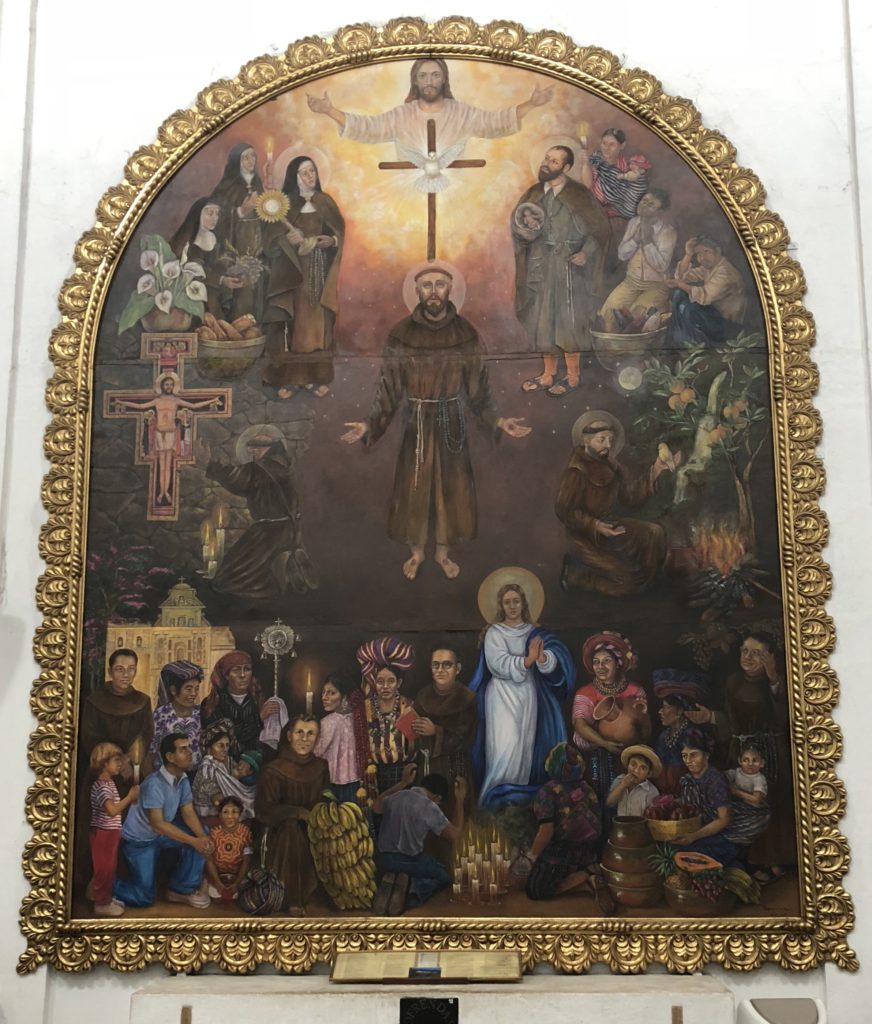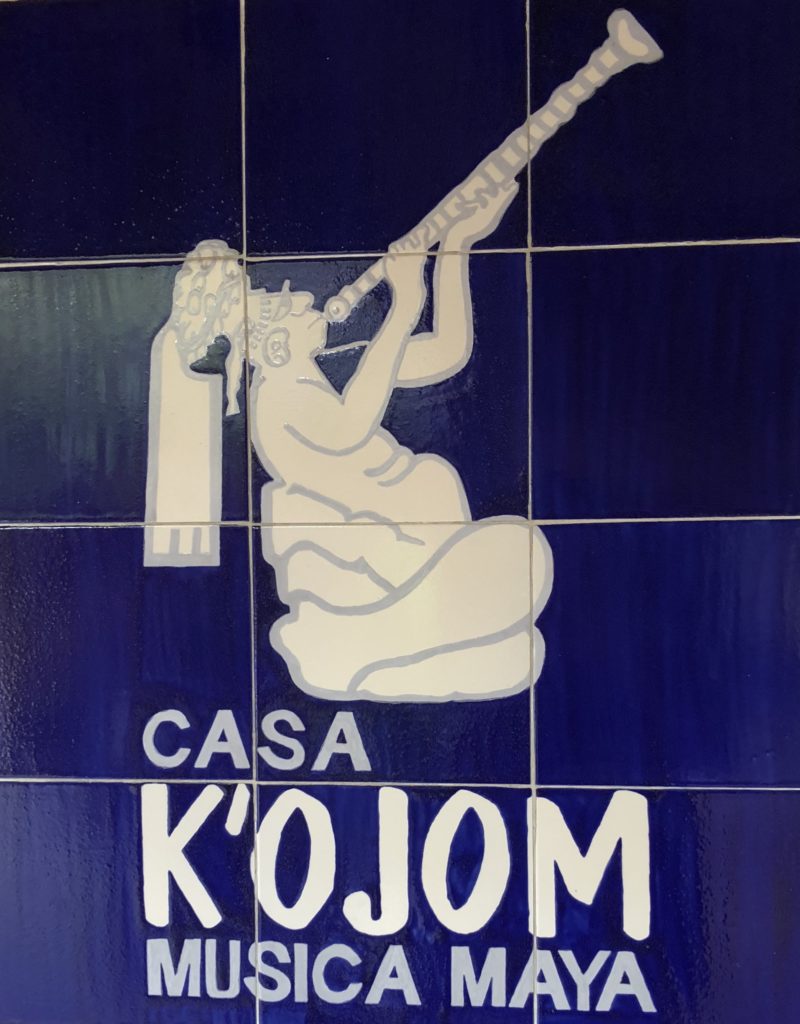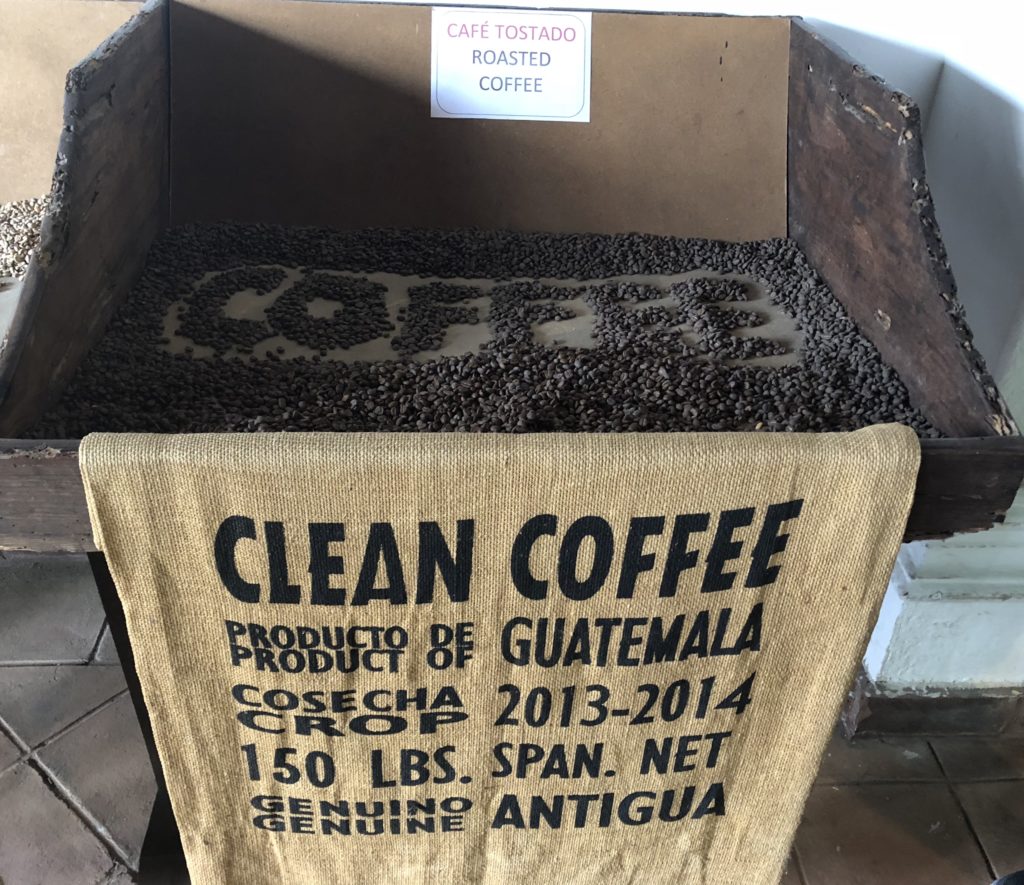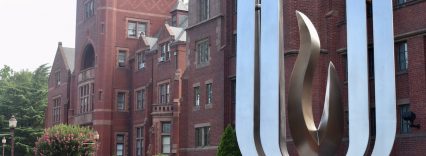Central America Travel Seminar: Buzzing over Guatemalan coffee and a volcano 🌋

BY JILLIAN LINCOLN
The morning opens to clouds covering the active volcano we watched erupt and pour out lava for a few seconds last night (top photo). It looks calm and surreal in the background of our breakfast. The conversation over Guatemalan coffee buzzes with excitement from last night’s eruption and a calming of everyone’s nerves over the past week in a half as we prepare to visit the coffee plantation where the indigenous population was forced to work for low wages.

Franciscans arrived in Guatemala in 1523. They first visited Guatemala, Nicaragua, and Honduras on foot. The Franciscans taught the indigenous people Spanish, faith instruction and human instruction. The human part was teaching the different groups of indigenous people trades such as carpentry and bricklaying. The indigenous people, in fact, built the Church of the Franciscans that we visited. 1565 the Franciscan churches received legal recognition from the Spanish that it was a formal organization.
Just over 300 years later in 1888, the government in Guatemala kicked out all the missionaries including the Franciscans. The Franciscans then chose to be clandestine and dressed like the local clergy who were allowed to remain and practice in the country. There were only a dozen Franciscans here at the time and in 1900 they appealed to the Pope to ask for more help. In 1922 volunteers from Spain came to Guatemala to join the dozen Franciscans. They still had to come in secret, so at the border, a few told different stories of what their professions were. One came as a tailor and another a clown. The man that claimed to be a clown told a joke at the border to validate his story. Year after year more Franciscans came until the 1940s when the government of Guatemala started letting missionaries back into the country. The 1940s and on started bringing Franciscans from New York, Italy, and Ireland to participate in the missions in Guatemala.

Central Cultural La Azotea was a great place to hear and learn about Mayan music. Mayan music is played specifically for the gods. The first Mayan instrument was the shell that you put up to your ear to hear the ocean. Only the Mayans didn’t do that. They blew on the end of it to make a deep melodic sound. Another instrument we saw played was the Ocarina that imitated animal sounds. We were able to participate and play instruments like the turtle shell and deer horn used as drums. Many of the instruments played by the Mayan people even today consist of different flutes and drums. They also play string instruments that were taught to them by the Spanish.
After listening to some music, we entered a replica of the House of Mashimun from Santiago. Mashimun is a Mayan god. Select Mayans take care of the house for a year. People will come with their offerings of money, alcohol, and cigarettes. The house is decorated with flowers, colorful paper, and the floor with pine straw to smell good as offerings to Mashimun. As part of the offering, you also bring candles. Each color represents something that you are asking of Mashimun. The red candle is for love, the white or yellow candle is for protection, and the purple candle is for drugs or alcohol. You are asking the god to fix or make the things like drugs and alcohol addiction disappear.

After enjoying a little music, we headed for a caffeine stop. We took a tour of a coffee plantation. The soil is mixed with clay to help the coffee grow. We learned that pesticides are too hard on the coffee plants so they use their own natural mixture of chile, garlic, and aloe vera to keep the pests away. They also plant banana and avocado trees for shade for the coffee. The plants cannot grow in direct sunlight. The beans, however, dry out the best in direct sunlight after they have been harvested. How relaxing it was to enjoy a fresh cup of dark roast coffee outside looking at the beautiful volcano wondering if we will see it erupt a little again tonight.
Jillian Lincoln is a Master of Divinity / Master of Christian Education student at Union.


